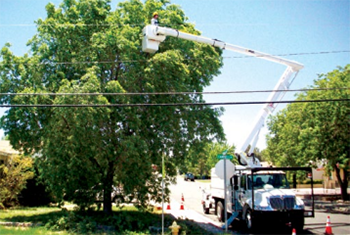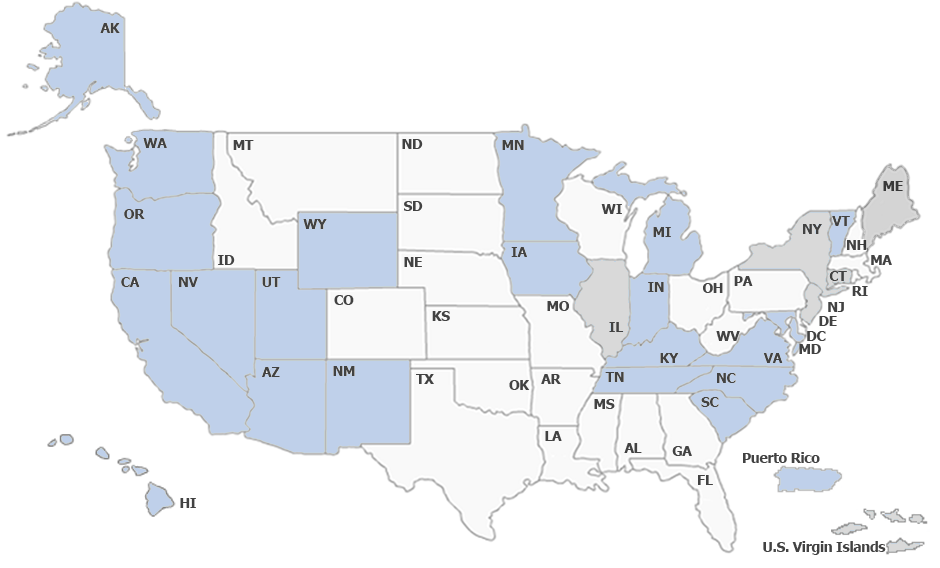Office of State Programs
State Plans
Frequently Asked Questions
OSHA Coverage
The Occupational Safety and Health (OSH) Act covers most private sector employers and their workers, in addition to some public sector employers and their workers in the 50 states and certain territories and jurisdictions under federal authority. Those jurisdictions include the District of Columbia, Puerto Rico, the Virgin Islands, American Samoa, Guam, Northern Mariana Islands, Wake Island, Johnston Island, and the Outer Continental Shelf Lands as defined in the Outer Continental Shelf Lands Act.
Private Sector Workers
OSHA covers most private sector employers and workers in all 50 states, the District of Columbia, and the other United States (U.S.) jurisdictions either directly through OSHA or through an OSHA-approved State Plan. State Plans are OSHA-approved job safety and health programs operated by individual states instead of federal OSHA. Section 18 of the OSH Act encourages states to develop and operate their own job safety and health programs and precludes state enforcement of OSHA standards unless the state has an OSHA-approved State Plan.
OSHA approves and monitors all State Plans and provides as much as fifty percent of the funding for each program. State-run safety and health programs must be at least as effective (ALAE) as the federal OSHA program. OSHA provides coverage to certain workers specifically excluded from a State Plan, for example, those in some states who work in maritime industries or on military bases. To find the contact information of the OSHA or State Plan office nearest to you, call 1-800-321-OSHA or go to www.osha.gov.
The following 22 states or territories have OSHA-approved State Plans that cover both private and public sector workers:
- Alaska
- Arizona
- California
- Hawaii
- Indiana
- Iowa
- Kentucky
- Maryland
- Michigan
- Minnesota
- Nevada
- New Mexico
- North Carolina
- Oregon
- Puerto Rico
- South Carolina
- Tennessee
- Utah
- Vermont
- Virginia
- Washington
- Wyoming
State and Local Government Workers
Workers at state and local government agencies are not covered by OSHA, but have OSH Act protections if they work in those states that have an OSHA-approved State Plan. OSHA rules also permit states and territories to develop plans that cover state and local government workers only. In these cases, private sector workers and employers remain under federal OSHA jurisdiction.
Six additional states and one U.S. territory have OSHA-approved State Plans that cover state and local government public sector workers only:
- Connecticut
- Illinois
- Maine
- New Jersey
- New York
- Virgin Islands
OSHA monitors and evaluates State Plans annually through the Federal Annual Monitoring Evaluation (FAME) process. This process is used to: determine whether the State Plan is continuing to operate at least as effectively as OSHA, track a State Plan's progress in achieving its strategic and annual performance goals, and ensure that the State Plan is meeting its mandated responsibilities under the Act and other relevant regulations. Recent and archived FAME reports for each State Plan can be found here.
State Plans must set workplace safety and health standards that are "at least as effective as" as OSHA standards. Many State Plans adopt standards identical to OSHA. State Plans have the option to promulgate standards covering hazards not addressed by OSHA standards. A State Plan must conduct inspections to enforce its standards, cover state and local government workers, and operate occupational safety and health training and education programs. Click here to see a list of links to the State Plans' safety and health standards and regulations. State Plan responses to OSHA standards and Federal Program Changes issued since 2006 can be found here.
As of January 1, 2015, establishments located in states under federal OSHA jurisdiction began complying with the new reporting and recordkeeping requirements. By June 1, 2015, establishments located in OSHA-approved State Plans reviewed their current reporting and recordkeeping requirements to determine how they compared to federal OSHA, and began the process of: adopting OSHA's new reporting requirements, retaining their current reporting requirements if they were at least as effective as OSHA's, or adopting more stringent reporting requirements. For more information on a specific State Plan, visit the Office of State Programs' webpage and click on a state or U.S. territory highlighted in blue or gray located on the U.S. map.
Yes. State Plans have their own penalty reduction policies and procedures that may differ from OSHA's but must be deemed at least as effective. All State Plan policies and procedures related to penalties must be submitted and reviewed by OSHA. State Plans also have their own system for review and appeal of citations, penalties, and abatement periods. The procedures are generally similar to OSHA's, but cases are heard by a state review board or equivalent authority.
Workers have the right to a safe workplace. The Occupational Safety and Health Act of 1970 (OSH Act) was passed to prevent workers from being killed or seriously harmed at work. The law requires employers to provide their employees with working conditions that are free of known dangers. The OSH Act created the Occupational Safety and Health Administration (OSHA) which sets and enforces protective workplace safety and health standards. To help assure a safe and healthful workplace, OSHA also provides workers with the right to:
- Ask OSHA to inspect their workplace;
- Use their rights under the law without retaliation and discrimination;
- Receive information and training about hazards, methods to prevent harm, and the OSHA standards that apply to their workplace. The training must be in a language you can understand;
- Get copies of test results done to find hazards in the workplace;
- Review records of work-related injuries and illnesses;
- Get copies of their medical records.
In addition, OSHA provides information, training, and assistance to workers and employers.
Workers may file a complaint to have OSHA inspect their workplace if they believe that their employer is not following OSHA standards or that there are serious hazards. Contact the OSHA office nearest you by calling OSHA's toll free number: 1-800-321-OSHA (6742) or TTY 1-877-889-5627 if you have questions or want to file a complaint. All information will be kept confidential. For more information, go to OSHA's Workers page.
A Complaint About State Program Administration (CASPA) is an oral or written complaint about some aspect of the operation or administration of a State Plan made to OSHA by any person or group. A CASPA is filed with the appropriate OSHA Regional Administrator. The complainant's name is kept confidential. OSHA will review and evaluate all complaints to determine if an investigation is warranted.
There are two ways to file a CASPA:
- Mail - Send written complaint to the appropriate OSHA Regional Office. Please include your name, address and telephone number so we can contact you to follow-up. This information is confidential. Anonymous complaints may not be investigated if the complaint lacks specificity or clarity.
- Telephone - Call your local OSHA Regional or Area Office. OSHA staff can discuss your complaint and address any questions you may have. If there is an emergency or your CASPA alleges a situation of imminent danger, call your local OSHA Regional Office.
A CASPA should describe the grounds for the complaint and specify the aspect or aspects of the administration or operation of the State Plan which is believed to be inadequate (e.g., a pattern of delays in processing workplace health and safety complaints, inadequate workplace inspections)
The first step in the process is for a state to gain OSHA approval is to become a Developmental Plan. During this process, a state must assure OSHA that within three years it will have in place all the structural elements necessary to be deemed effective. These elements include: appropriate legislation; regulations and procedures for standards setting, enforcement, appeal of citations and penalties; a sufficient number of qualified enforcement personnel.
Once a state has completed and documented all necessary developmental steps, it is eligible for Certification. Certification renders no judgment as to actual state performance, but merely attests to the structural completeness of the State Plan.
At any time after initial approval, when it appears that the State Plan is capable of independently enforcing standards, OSHA may enter into an Operational Status Agreement with the State Plan. This commits OSHA to suspend the exercise of discretionary federal enforcement in all or certain activities covered by the State Plan.
State Plans may additionally seek Final Approval under Section 18 (e) of the Act. After at least one year following certification, the State Plan becomes eligible for final approval if OSHA determines that it is providing, in actual operation, worker protection is "at least as effective" as the protection provided by OSHA. Under Final Approval, OSHA relinquishes its authority to cover occupational safety and health matters covered by the state.
States interested in developing an OSHA-approved State Plan should contact their local OSHA Regional Office for guidance and assistance. The OSHA Regional Office Directory can be found here. The Regional Office will notify OSHA's Directorate of Cooperative and State Programs (DCSP) of the state's interest. For more information on developing a State Plan, go to Outline for the Submission and Review of State Plans.
State Plan Contact Information
Select a state from the map to show contact information**.
Additional Resources
Contact Us

- U.S. Department of Labor/OSHA
- Office of State Programs, RM N3700
- 200 Constitution Avenue, NW
- Washington, DC 20210
- (202) 693-2244
 Translate
Translate







